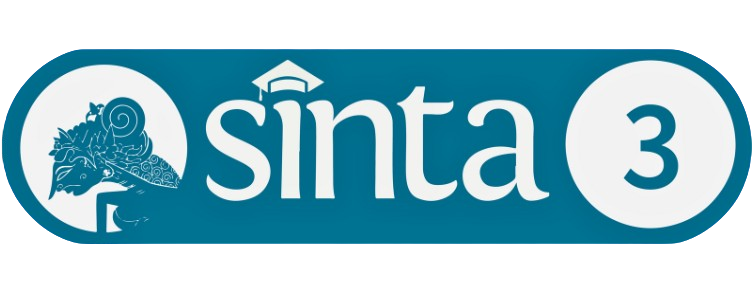Hubungan antara Parent Attachment dengan Regulasi Emosi pada Remaja
Downloads
Penelitian ini bertujuan untuk mengetahui hubungan antara parent attachment dengan regulasi emosi pada remaja. Definisi regulasi emosi mengacu pada teori Gross dan parent attachment mengacu pada teori Armsden & Greenberg. Metode yang digunakan dalam penelitian ini adalah kuantitatif. Skala yang digunakan ialah Inventory Parent and Peer Attachment (IPPA) dan Emotion Regulation Questionnaire (ERQ). Berdasarkan hasil penelitian uji korelasi diperoleh variabel parent attachment dengan regulasi emosi cognitive reappraisal menunjukkan korelasi 0,118 dengan p = 0,006 (p<0,01) menyatakan bahwa semakin tinggi parent attachment, maka semakin tinggi cognitive reappraisal. Sementara, uji korelasi variabel parent attachment dengan regulasi emosi expressive suppression menunjukkan korelasi -0,101 dengan p = 0,015 (p<0,05) menyatakan bahwa semakin tinggi parent attachment maka semakin rendah expressive suppression.
Alfian, M. (2014). Regulasi Emosi pada Mahasiswa Suku Jawa, Suku Banjar, dan Suku Bima. Jurnal Ilmiah Psikologi Terapan, 02(02), 263–275.
Armsden, G. C., & Greenberg, M. T. (2009). The inventory of parent and peer attachment: Individual differences and their relationship to psychological well-being in adolescence. https://doi.org/10.1007/BF02202939
Dewi, E. F. (2019). Pengaruh Kelekatan dengan Orangtua Terhadap Efikasi Diri Akademik pada Remaja Awal Skripsi.
Efriani, N. (2019). Hubungan antara kelekatan orang tua-anak dengan regulasi emosi remaja. In Psikologi. http://eprints.ums.ac.id/71571/1/NASKAH PUBLIKASI.pdf
Gross, J. J. (1998). The emerging field of emotion regulation: An integrative review. Review of General Psychology, 2(3), 271–299. https://doi.org/10.1037/1089-2680.2.3.271
Gross, J. J. (2007). Handbook of Emotion Regulation. In The Guilford Press. https://doi.org/10.1088/1751-8113/44/8/085201
Gross, J. J., & John, O. P. (2003). Individual Differences in Two Emotion Regulation Processes: Implications for Affect, Relationships, and Well-Being. Journal of Personality and Social Psychology, 85(2), 348–362. https://doi.org/10.1037/0022-3514.85.2.348
Nisfiannoor, M., & Kartika, Y. (2004). Hubungan antara regulasi emosi dan penerimaan kelompok teman sebaya pada remaja. Jurnal Psikologi, 2(2), 160–178.
NusaBali.com. (2019). 9,8 Persen Pemuda di Bali Idap Gangguan Emosional. https://www.nusabali.com/berita/52576/98-persen-pemuda-di-bali-idap-gangguan-emosional
Pawulan, R. A., Loekmono, L., & Irawan, S. (2018). Hubungan Antara Kelekatan Orangtua Dengan Regulasi Emosi Remaja Pondok Pesantren Agro "Nuur El-Falah” Salatiga. Psikologi Konseling, 13(2), 231–248. https://doi.org/10.24114/konseling.v13i2.12194
Santrock, J. W. (2003). Adolescence perkembangan remaja. Erlangga.
Santrock, J. W. (2012). Life-span development - 13th edition. PT. Gelora Aksara Pratama.
Santrock, J. W. (2014). Adolescence (Fifteenth). McGraw-Hill Education.
Sepda, D. I. (2018). PENGARUH COGNITIVE BEHAVIOR GROUP THERAPY TERHADAP PENINGKATAN REGULASI EMOSI PADA ATLET TIM PERSEGRES GRESIK.
Steinberg, L. (2014). Adolescence (Tenth Edit). McGraw-Hill Education.
Turliuc, M. N., & Bujor, L. (2013). Emotion Regulation between Determinants and Consequences. Procedia - Social and Behavioral Sciences, 76, 848–852. https://doi.org/10.1016/j.sbspro.2013.04.218
Winterheld, H. A. (2015). Calibrating Use of Emotion Regulation Strategies to the Relationship Context: An Attachment Perspective Heike A. Winterheld.pdf. Journal of Personality, 370–380.
BRPKM is a periodical publication with open access to the Creative Commons Attribution 4.0 International (CC-BY 4.0). Therfore, the copyright remains with the author.
With this license, anyone has the right to use the information and to re-distribute the content contained in this journal for any purpose, including commercial purposes. It can be done as long as it fulfills two conditions, namely; (1) you shall provide attribution by citing the original link source, and state if any changes have been made; and (2) you may not use any legal provisions or technological means of control that can legally restrict others from doing the things that are permitted by this license.
Journal editors will not ask the author to approve the transfer of copyright on all published manuscripts.










